Authors: Rinkita Gurav, Pramod Neupane, Bidyut Barman, Sunny Joshi
Along the Langha road in Dehradun, Uttarakhand, a five-kilometre stretch of insulated powerlines has transformed a death trap for raptors, including the endangered ones like the Himalayan vulture(Gyps himalayensis), Egyptian vulture (Neophron percnopterus) and steppe eagle (Aquila nipalensis), into a safer zone. What was once a hotspot of bird casualties caused by electrocution is now an inspiring model for balancing infrastructure development and wildlife conservation.
Background
Sitla, a seasonal tributary of the Asan River, runs around the outskirts of Dehradun. For decades, the local butchers discarded animal carcasses—over 60 every week—in a dedicated area close to the Sitla tributary. This informal practice attracted and sustained the scavengers in the region, including 24 raptor species. The practice also supported an ecological balance by preventing disease outbreaks, providing livelihoods and sustaining raptor populations.
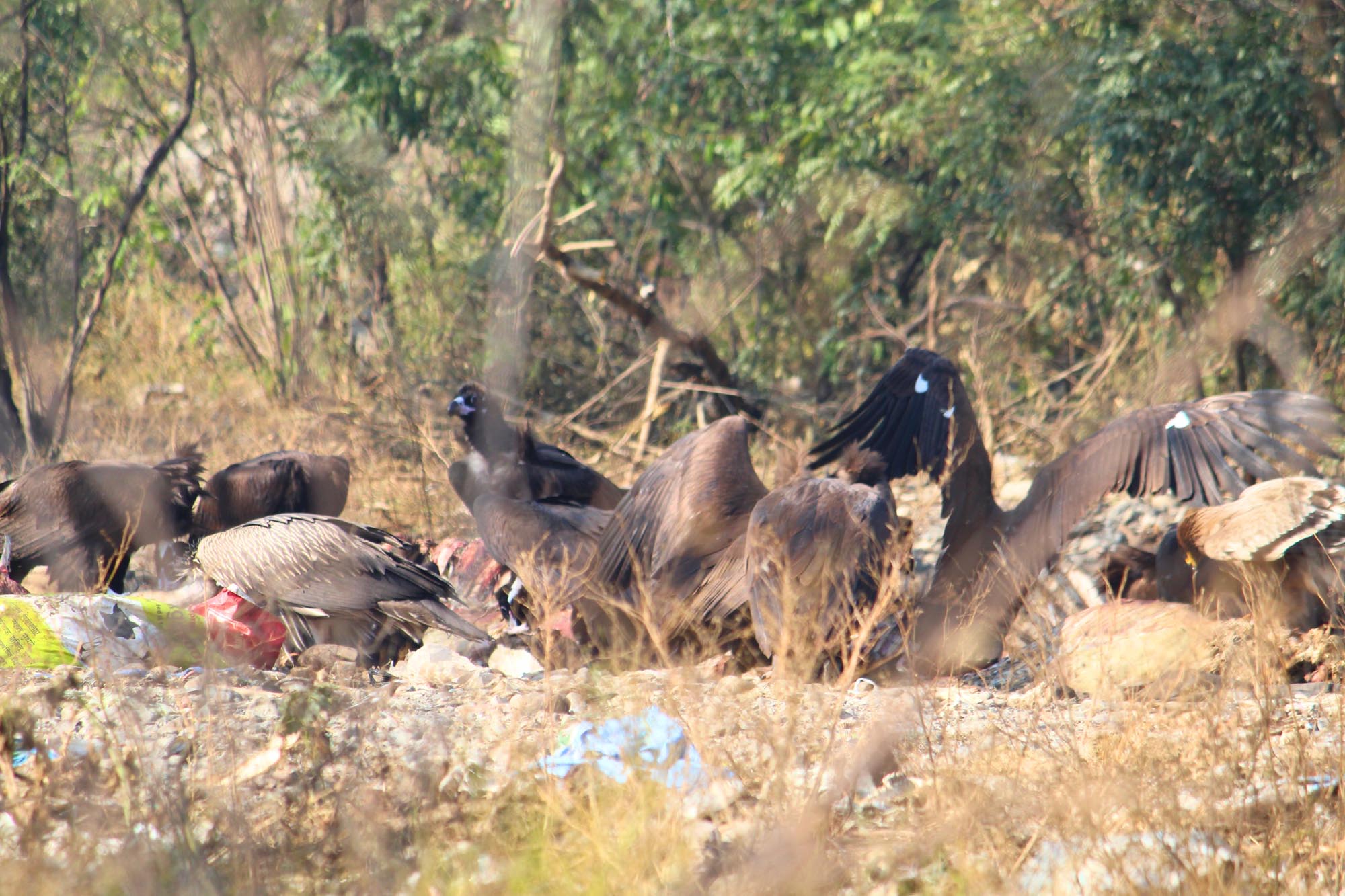 For decades, the local butchers have discarded animal carcasses in a dedicated area close to the Sitla tributary.
For decades, the local butchers have discarded animal carcasses in a dedicated area close to the Sitla tributary.
PC: Sunny Joshi/WWF-India
Growing threat hiding in plain sight
A 33 KV single-circuit distribution line runs for 10 kilometres with minimal tree canopy along the carcass disposal sites at the Sitla tributary. The powerline poles and pylons, the tallest structures around, have become natural perching sites for large-bodied raptors, including the vultures. This poses a significant danger to birds, especially those with a large wingspan, as their two wings could touch wires during landing and flight, sending a strong electric shock and killing them instantly.
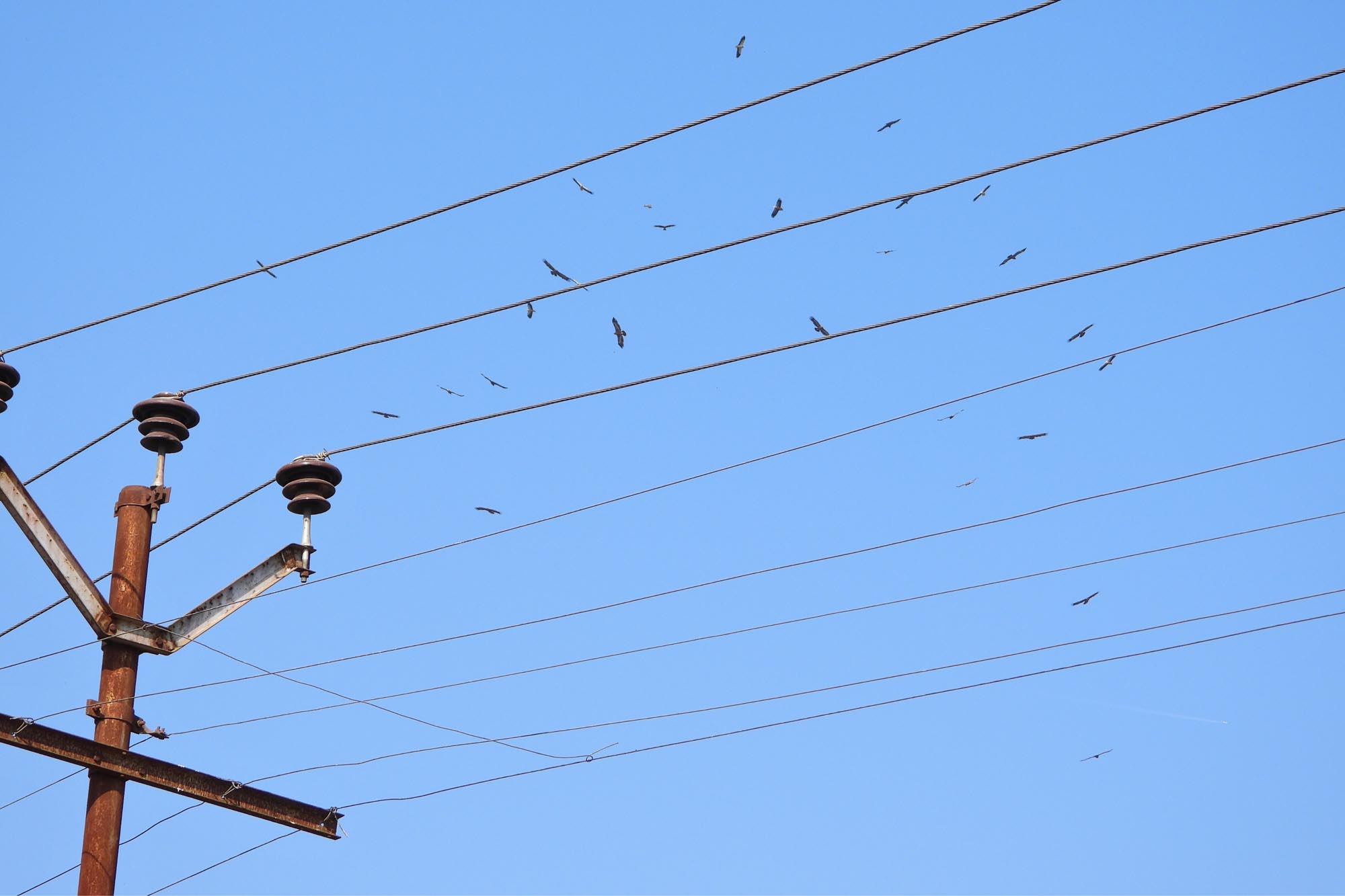 Electrocution has emerged as a significant threat to raptors.
Electrocution has emerged as a significant threat to raptors.
PC: Sunny Joshi/WWF-India
A study conducted between 2014 and 2019 by a local organisation had recorded more than 130 raptor deaths by electrocution along a four-kilometre stretch of powerlines at Langha Road. Another study reported that electrocutions caused multiple deaths of Himalayan vultures and steppe eagles in Doon Valley and surrounding regions. It reported “49 Himalayan vultures, 1 Egyptian vulture and 21 Steppe eagles dead in four sites of Dehradun and Haridwar districts” (Balodi et al., 2018).
In 2022, WWF-India began monitoring the carcass dump sites at Langha Road in Dehradun and observed an alarming pattern of deaths of scavenging raptors—30 bird deaths every winter since 2022.
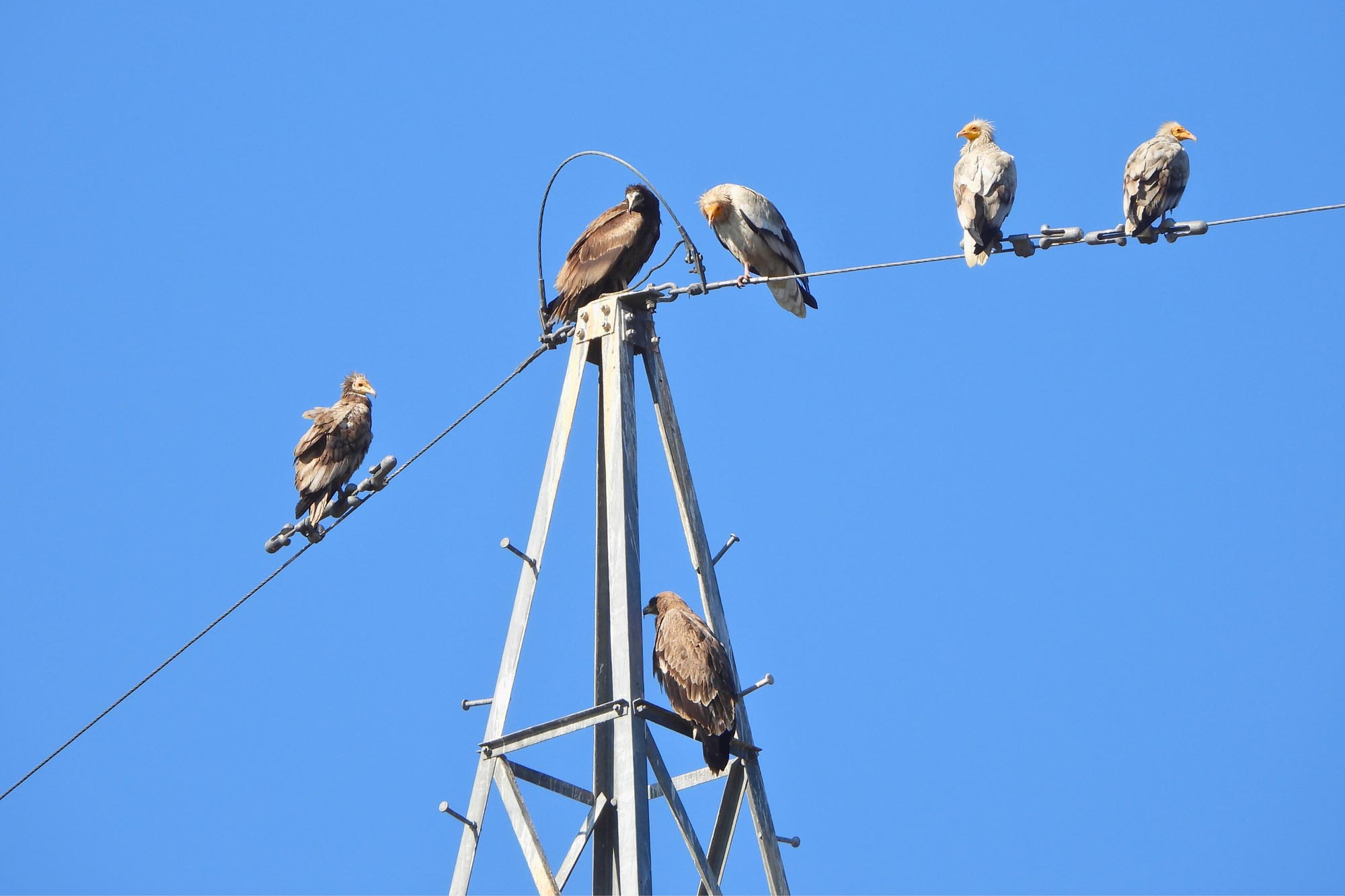 Since 2022, WWF-India has recorded 30 raptor deaths every winter at Langha Road due to electrocution
Since 2022, WWF-India has recorded 30 raptor deaths every winter at Langha Road due to electrocution
PC: Sunny Joshi/WWF-India
Electrocution, a leading cause of bird mortality
Electrocution has emerged as a significant threat to large raptors not just in India but also globally. For endangered species like white-rumped vultures and Egyptian vultures already under severe pressure, the loss of even a few individuals every year can tip local populations into extinction. Studies from the early 2000s, suggested that in the United States, powerline electrocution accounts for up to 96% of recorded mortality in large raptors (Eccleston & Harness, 2018). In India, where nine species of vultures occur and four are critically endangered, safeguarding them from infrastructure-related threats is critical for sustaining ecosystem services worth billions of rupees annually.
Finding a solution: Langha Road Story
Recognising the gravity of the situation, WWF-India facilitated discussions among key stakeholders and shared related photographic evidence and field data. A committee was constituted under the leadership of the Kalsi Forest Division with representatives from Chhabra Zila Panchayat, Uttarakhand Power Corporation Limited (UPCL) and Power Transmission Corporation of Uttarakhand Limited (PTCUL) to find and implement a solution. The group deliberated on the feasibility of various interventions like relocating the carcass disposal site, installing artificial perching platforms and insulating the powerlines. The last option was the most practical and feasible solution, as the impact of bird electrocution went beyond ecological harm, to causing economic losses.
With every electrocution incident at the Langha road in Dehradun, the power supply was disrupted for up to an hour, with each hour of outage costing approximately INR 50-55 lakhs, causing significant economic losses. Recognising this, UPCL agreed to invest around INR 2 crore to insulate 5 kilometres of exposed wires to reduce bird deaths due to electrocution and help ensure uninterrupted power supply and avoid such costly interruptions (Kumar et. al., 2022; Frank & Sudarshan, 2024).
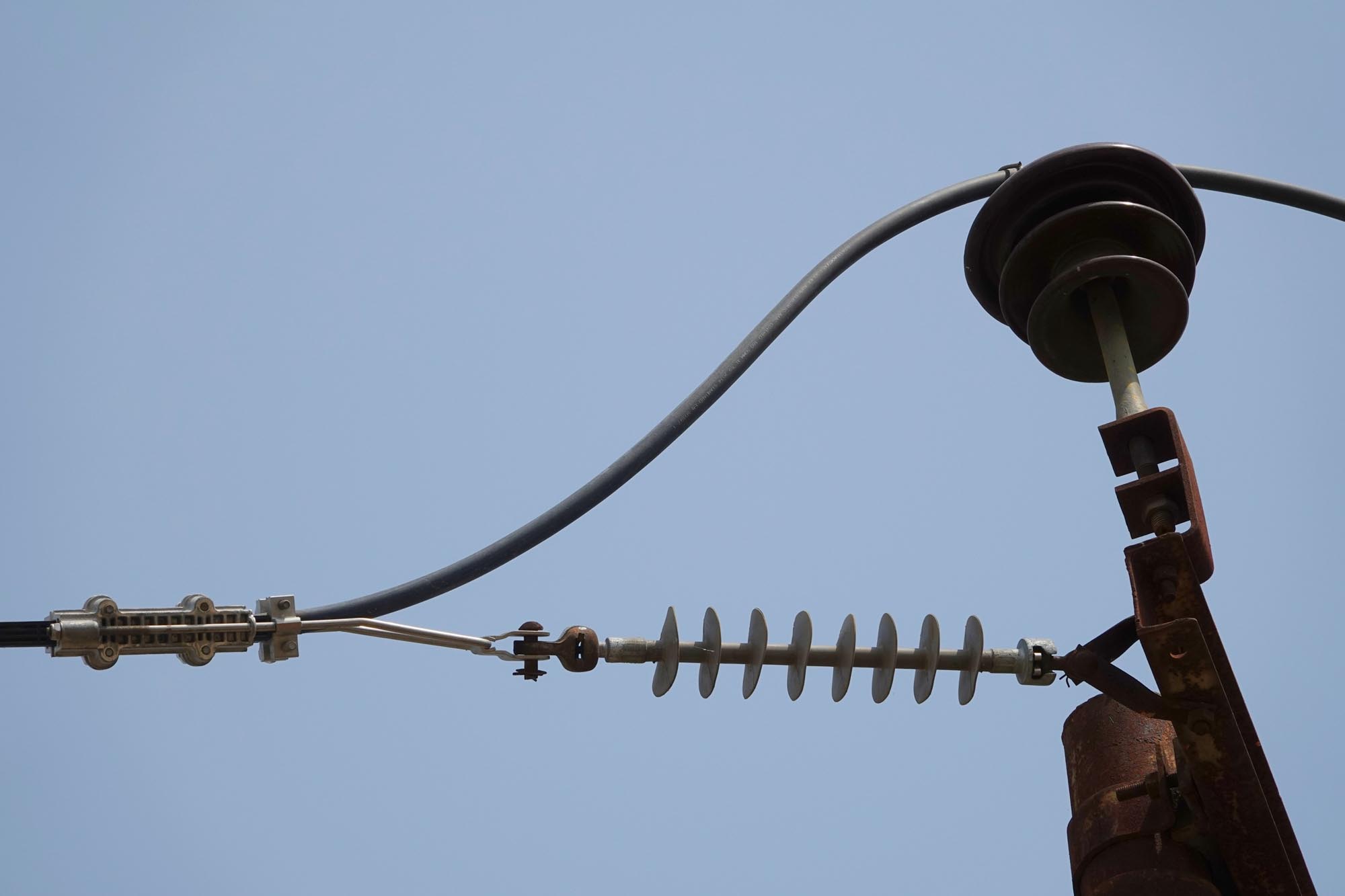 In April 2025, the five kilometres of exposed distribution lines on the Langha road were insulated with cables to reduce the risk of electrocution.
In April 2025, the five kilometres of exposed distribution lines on the Langha road were insulated with cables to reduce the risk of electrocution.
PC: Sunny Joshi/WWF-India
Globally, in regions where these measures were applied, including sites studied in India and Central Asia, raptor and vulture mortalities have declined markedly, demonstrating the strong effectiveness of insulated and retrofitted powerlines in preventing further bird deaths. Installing mitigation barriers and insulation on electricity distribution poles led to a significant reduction in raptor electrocution rates, with average decreases of 85% compared to unmitigated lines (Dixon et al., 2018).
Promising results
In April 2025, the five kilometres of exposed distribution lines on the Langha road were insulated with cables to reduce the risk of electrocutions in the most dangerous section. The results of this initiative have been encouraging, as no raptor electrocutions were observed in the mitigated stretch since April. The WWF-India’s Raptor Conservation Programme team has been continuously monitoring the sites.
Integrating conservation principles into local infrastructure planning
Langha Road’s story is rooted in a broader socio-ecological context. The decades-long practice of carcass disposal at the site has helped prevent disease outbreaks, generated livelihoods, supported scavenging raptor populations and maintained ecological balance. However, the linear infrastructure intersecting this system threatened to sever an ancient thread of coexistence without timely intervention. This case sets a precedent for integrating conservation principles into local infrastructure planning. Sometimes, conservation is not about halting development but reshaping it to accommodate all those who share the land—and indeed, the sky.
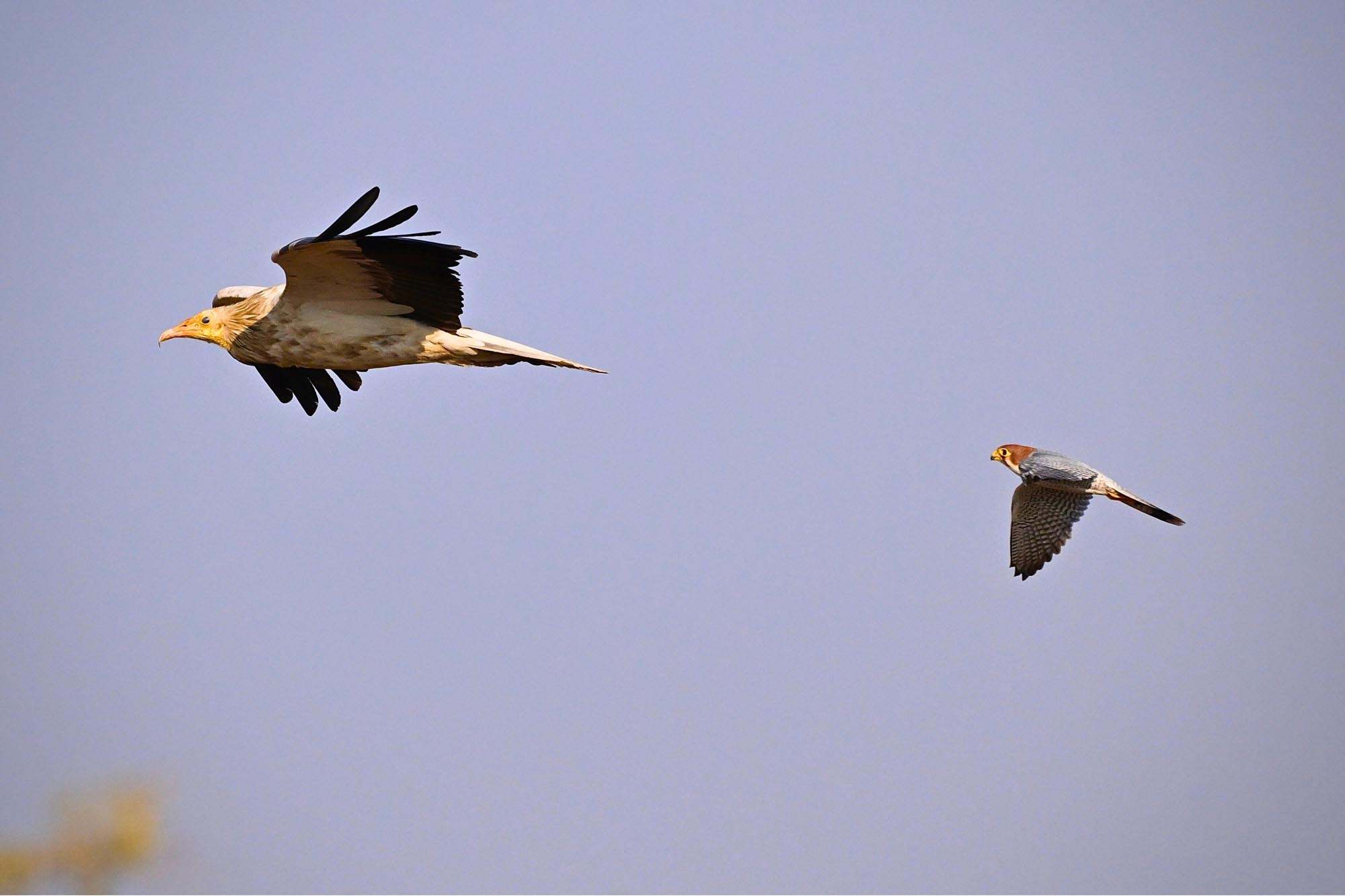 The Langha Road case sets a precedent for integrating conservation principles into local infrastructure planning.
The Langha Road case sets a precedent for integrating conservation principles into local infrastructure planning.
PC: Yogesh Gurav

India is home to nine species of vultures - white-rumped vultures (Gyps bengalensis), Indian long-billed vulture (Gyps indicus), slender-billed vulture (Gyps tenuirostris), red-headed vulture (Sarcogyps calvus), Egyptian vulture (Neophron percnopterus), cinereous vulture (Aegypius monachus), bearded vulture (Gypaetus barbatus), Himalayan griffon (Gyps himalayensis) and Eurasian griffon (Gyps fulvus).
Vulture populations in India have faced a dramatic decline due to several threats, including the ingestion of toxic non-steroidal anti-inflammatory drugs (NSAIDs) like diclofenac, commonly used to treat livestock, as well as habitat loss, electrocution, food scarcity and human disturbances. The alarming drop in vulture numbers has led to some species being classified as Critically Endangered by the IUCN.
References: